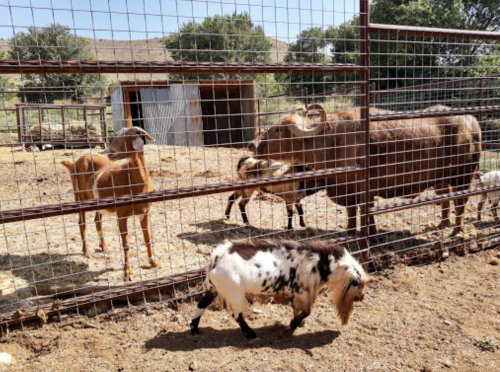Spring is well underway in the Land of Enchantment. Over the last couple of weeks, temperatures have been slowly warming up around the state, and nature is waking up.
Those sunny, balmy days are perfect for spotting the beauty in nature, whether that means trekking dusty hiking trails...
...encountering blooming wildflowers...
...or even spotting lovely wildlife, like mule deer in the mountains.
The warming temperatures in spring, however, also means some less desirable animals emerge as well.
As the mercury rises on thermometers, snakes around the state surface from their dens to begin laying eggs and hunting.
These slithery creatures look creepy, but not all are dangerous.
Some are non-venomous (like bullsnakes) and are mostly harmless (like garter snakes). But rattlesnakes are the ones that will have you constantly watching your step.
New Mexico is home to seven species of rattlesnakes, found in the state's deserts and forests.
Because they can be found everywhere, it's a good idea to know where they live and what to do when you encounter one.
New Mexico State University's College of Agriculture, Consumer, and Environmental Sciences has a helpful and extensive guide about living near snakes.
In a nutshell, it explains that snakes come out of hibernation in the spring, lay eggs, and quietly lie in wait for prey. They typically prefer areas where they can hide, such as firewood stacks, tall grass, and shrubs.
Since New Mexico's rattlers are mostly shades of brown, gray, and green, they can easily blend in with their environment. This is why it's important to keep an eye out for rattlesnakes when out for a hike, doing yard work, or even walking the dog.
It's important to keep in mind that while rattlesnakes aren't aggressive, they are extremely defensive.
If they are cornered or encounter a threat by larger animals, they will strike from their coiled pose. As of 2015, up to 80 people per year were bitten by rattlers in New Mexico. People rarely die of rattlesnake bites these days, but the emergency treatment costs can quickly add up to a very hefty bill.
If you do spot a snake while out and about, the best thing to do is keep as much distance as possible between you and the snake.
Depending on its length, rattlers can strike up to five feet away. If you are bitten, the New Mexico Poison and Drug Information Center recommends staying calm, immobilizing the bite area and keeping it level with the heart, and seeking medical treatment immediately.
If you really want to avoid encountering rattlesnakes but still see lovely views, the Internet is filled with great photos and videos so you can enjoy nature from afar. We suggest starting with watching a short but impressive shot from a drone. Read more in Jaw-Dropping Drone Footage Of New Mexico's Natural Beauty.
Subscribe to our newsletter
Get the latest updates and news
Thank you for subscribing!




























